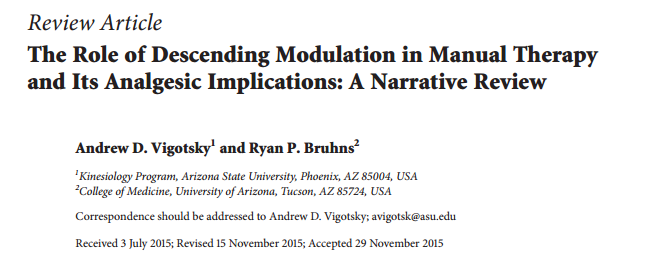9 Open Access Articles All Massage Therapists Should Read
/The RMT Education Project - Evidence Based Resources
We provided massage therapists with tools & resources to simplify the complex - taking a intensive processes and break it down in to manageable chunks. Here we break down a list of 9 must read open access articles for massage therapists. Click the links below to access our tools & resources:
The Massage Therapy Literature Countdown
• 10 Articles All Massage Therapists Should Read
• 9 Open Access Articles for Massage Therapists
• 8 Researchers Who Are Changing Massage Therapy
• 7 Books For Massage Therapists
• 6 Blogs For Massage Therapists
• 5 Systematic Reviews of Massage Therapy
• 4 Articles About The Importance of Touch
• 3 Bones You May Not Have Heard About
• 2 Peer-reviewed Publications for Massage Therapists
• 1 Book That Will Change The Way You Think
Open Access Tools & Resources
• Curated Resources for Massage Therapists
• Open Access Research Papers
• Resources for Patients
Research Review
• A New Muscle: The Tensor Vastus Intermedius
• Pleasure Receptors Response to Massage
• Does Fascia Release
• Evidence Informed Massage
• IASTM- What is IASTM?
• Articles on Pain Science
Nine Open Access Articles For Massage Therapists
ONE
Tendon pain is complicated, this narrative review from Ebonie Rio, Lorimer Moseley and Jill Cook and others breaks down the current thoughts on tendon pain.
“An improved understanding of the methods that maximise the opportunity for neuroplasticity may be an important progression in how we prescribe exercise-based rehabilitation in tendinopathy for pain modulation and potentially restoration of the corticospinal control of the muscle-tendon complex.”
TWO
If you are looking to learn more about the neurological effect massage therapy has on patients, check out narrative review.
“Nearly all types of manual therapy have been shown to elicit a neurophysiological response that is associated with the descending pain modulation circuit; however, it appears that different types of manual therapy work through different mechanisms. For example, while massage therapy appears to elicit an oxytocin response, spinal manipulation does not.”
THREE
This review article breaks down some of the latest thoughts on peripheral nerve entrapment.
“Although nerves may be injured anywhere along their course, peripheral nerve compression or entrapment occurs more at specific locations, such as sites where a nerve courses through fibroosseous or fibromuscular tunnels or penetrates muscles”
FOUR
Pain is a complex experience and this article does a good job of breaking down neuroplasticity in the central nervous system and how it relates to pain.
“Musculoskeletal injury, in addition to the local damage to anatomical structures and inflammation, results in changes in sensory stimuli, transmission and processing including neuroplastic changes along the neuroaxis of pain within the spinal cord and brain stem”
FIVE
There is always a role from massage therapy in the management of scars.
**If you are looking for more information on scar tissue I recommend reading this paper by on Scars by Susan Chapelle.**
“Manual medicine, physiotherapy, and osteopathy are some of the manual rehabilitative approaches to treat scars. Although most professionals commonly use these techniques, there is little peer-reviewed literature on these techniques.”
SIX
The way we present ourselves and present our techniques has influence on the treatment. The magnitude of the placebo effect may be influenced by mood, expectation, and conditioning.
“Giving information stating that a particular treatment is effective is ethical, provided that such information is realistic. The central principle is to build realistic hope and influence expectations. This may activate the effects of placebo and thereby improve the results of the treatment. This is a way to access the patient’s own healing potential as much as possible.”
SEVEN
The Autonomic Nervous System is a marker of stress and "rebound" capacity, this research article documents the effect that massage therapy has on this system.
“Besides confirming the strong correlation between autonomic functions and disease severity our study shows that single session of F&H (Foot & Hand) massage can modulate overall autonomic function. Another important result is the demonstration that the ANS remains receptive to repeated sessions when they are administered at a pace of about 1 to 1.5 hours during daytime.”
Eight
This is a very dense article! It addresses how touch can be interpreted as positive or negative depending on the context.
“When being touched by another individual, inferences about the identity, physical characteristics, and the intentions of the toucher, conveyed through visual and auditory stimuli, gives useful information about the importance of the touch and how preferable it is.”
NINE
Peripheral nerve irritation/entrapment is often an unappreciated source of nociception. This commentary evaluates possible causes of nerve irritation, in hopes of encouraging new research on the subject of manual therapy with a focus on peripheral nerve function.
“The peripheral nervous system is subjected to a daily mechanical tensile load, as when a joint moves, undergoing compression and stretching. Compression happens when the surrounding tissues create a longitudinal force to a nerve, such as when the muscles are stretched, while stretching occurs when a force is parallel to the nerve...”










